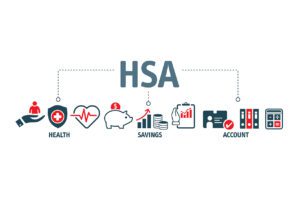
Getting the Most Out of Your Health Savings Account (HSA): Max It, Grow It, Pass It
Health Savings Accounts (HSAs) have grown in popularity over the years as consumers realize the flexibility and tax advantages this type of account can offer. They pack a “triple tax savings” which makes them a powerful savings tool for retirement. What exactly does that mean?
· Pre-tax contributions – reduces your taxable income (also not subject to FICA taxes)
· Tax-deferred growth on interest and investment earnings
· Tax-free distributions for qualified medical expenses
However, many individuals overlook the underlying options within their HSA and miss out on their full potential. Below, we’ll explore three key areas to help you optimize your HSA, utilizing the following strategies: Max it, Grow it, and Pass it. Let’s dive in!
#1 Max it
The maximum contribution set by IRS for 2023 is $3,850 for individual coverage and $7,750 for family coverage. If you are 55 or older, you can defer an additional $1,000, which is considered a catch-up contribution. Keep in mind most employers will contribute on your behalf to your HSA as an incentive and to help offset the higher deductible. The maximum you can contribute is inclusive of any amount your employer contributes.
#2 Grow it
As tempting as it might be to use the funds in your HSA to cover medical expenses, it’s best to pay for medical expenses out of pocket and let the HSA grow. Although most accounts default to cash/money market, there’s likely an underlying option to invest a portion of the account. Leaving the funds in the account and investing them can provides an opportunity for compounding growth. If you are unsure what to invest in, reach out to your advisor for guidance. Utilizing the HSA for more of a long-term savings strategy can provide you with another bucket to pull from in retirement to cover expenses like Medicare premiums or even long-term care premiums tax-free. If you still have funds in your IRA after age 65, and worry that you don’t have enough qualifying expenses, don’t worry! After age 65, you can treat your HSA like a retirement account. Distributions are taxable but you won’t be subject to the 20% penalty for nonmedical withdrawals.
#3 Pass it
Ideally, you want to utilize and draw down your HSA once in retirement and not necessarily leave this type of an account to heirs. Choosing a beneficiary will determine how the funds are treated upon your passing and can ensure a smooth transition and optimal tax strategy. Listing your spouse as beneficiary will provide a continuation of the tax deferred nature of the account and ongoing access to funds for qualifying medical expenses without creating a taxable event for the surviving spouse. Unfortunately, the beneficiary doesn’t automatically default to your spouse; you have to designate them! Meaning, if you forget to list your spouse as the beneficiary, the remaining balance, even if you are on a family plan, will be subject to taxes at your death. If you designate a non-spouse as your beneficiary, they will receive the remaining balance, but it will be taxable to them upon receipt. This can impact their tax situation and potentially push them into a different tax bracket. To offset this, they can pay for medical expenses incurred within a year of the owner’s passing and reduce the taxable amount. If you forget to name a beneficiary entirely, the funds are taxable on your final tax return and are subject to probate. Listing a beneficiary is key to protecting the funds and avoiding the funds getting held up in the probate process.
A Health Savings Account is an excellent tool for managing healthcare expenses while reaping the tax benefits. Be sure to consider these tips so you can maximize your HSAs full potential. Reach out to your Wealth Advisor if you’d like help reviewing.



